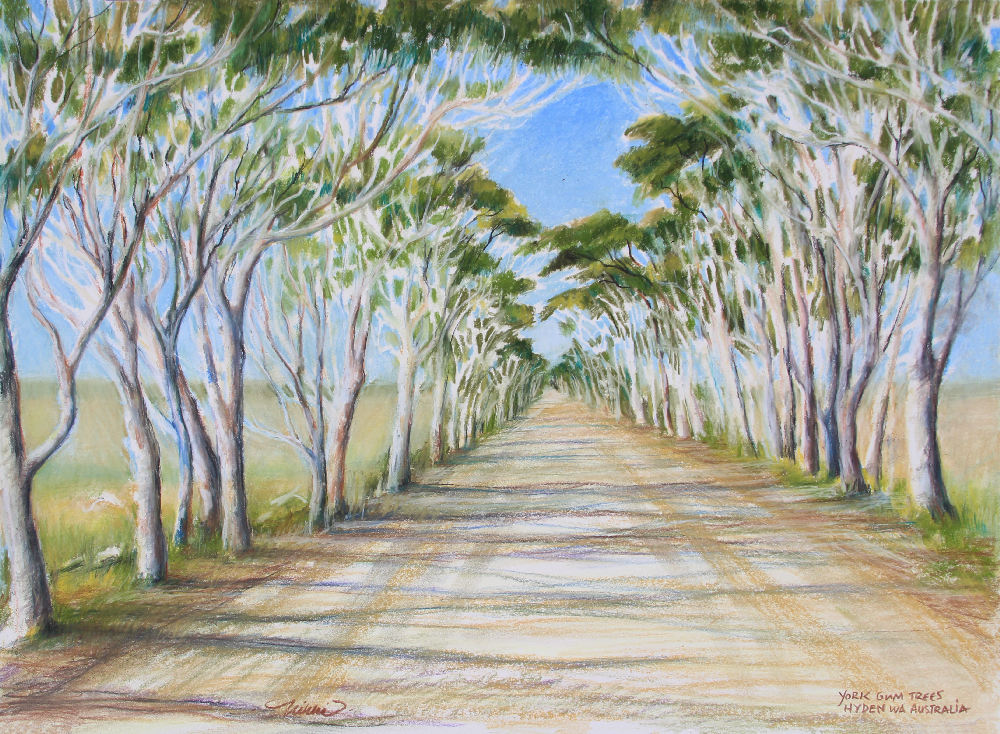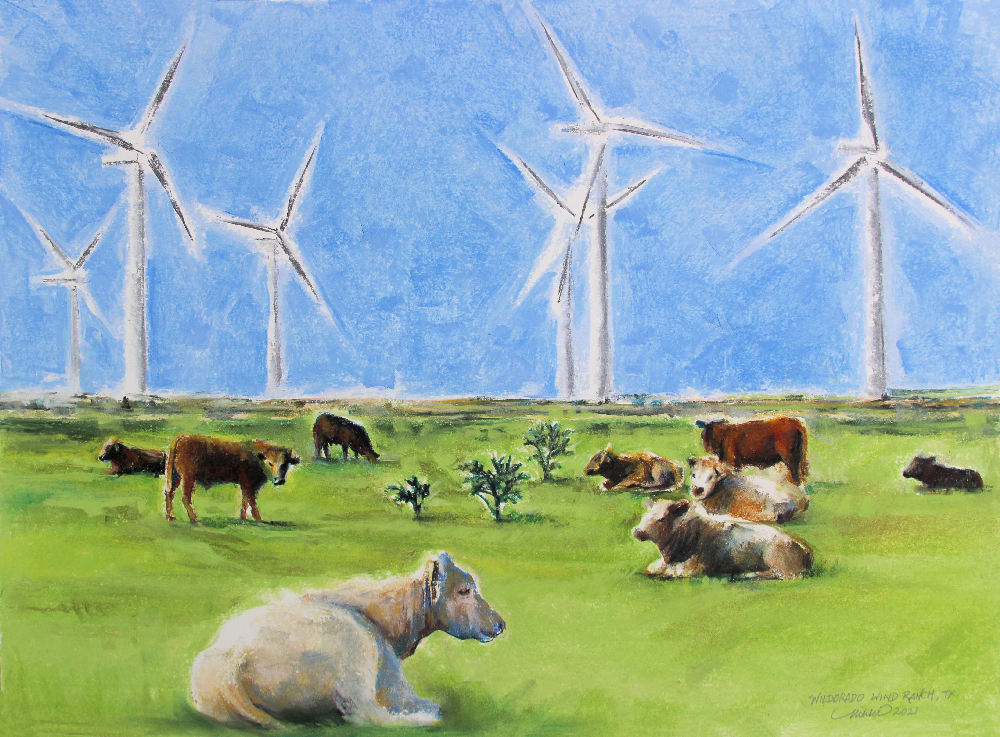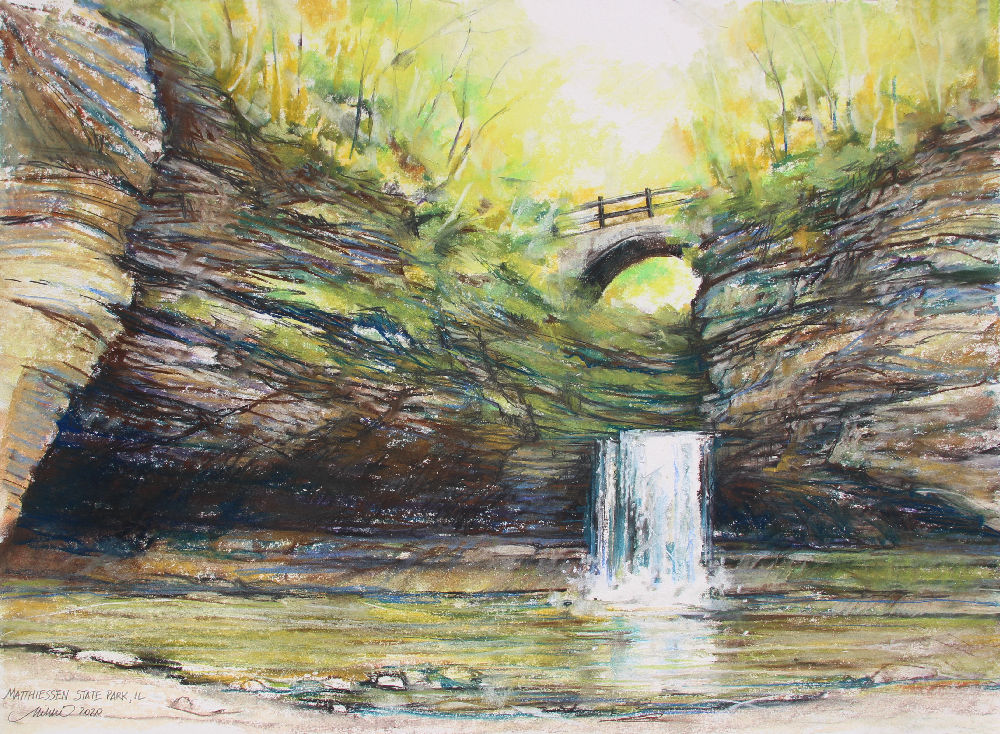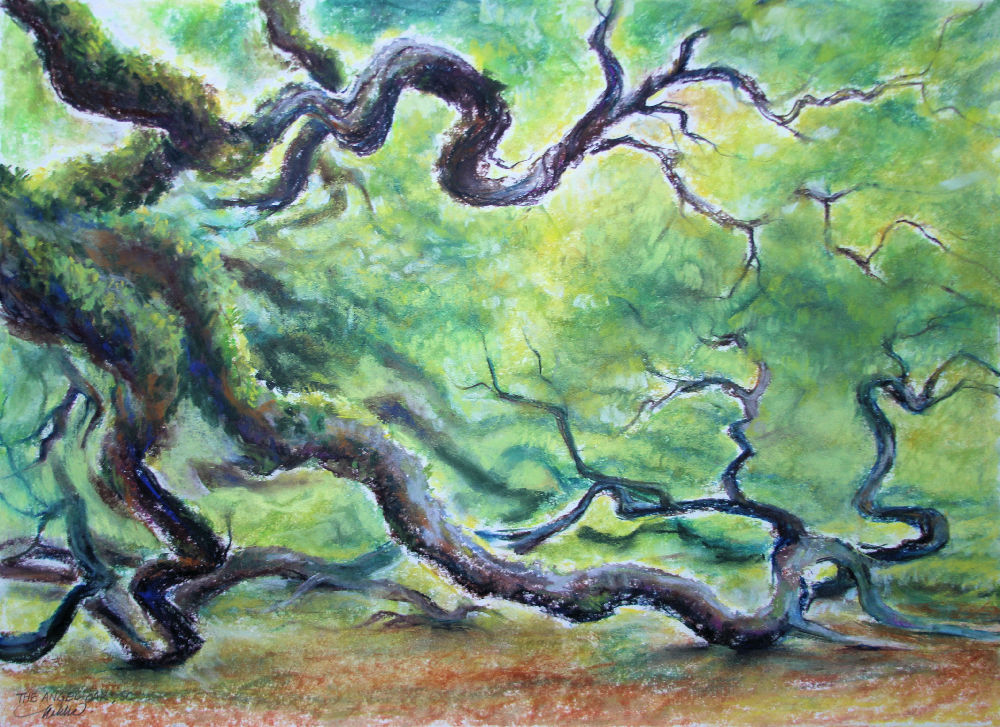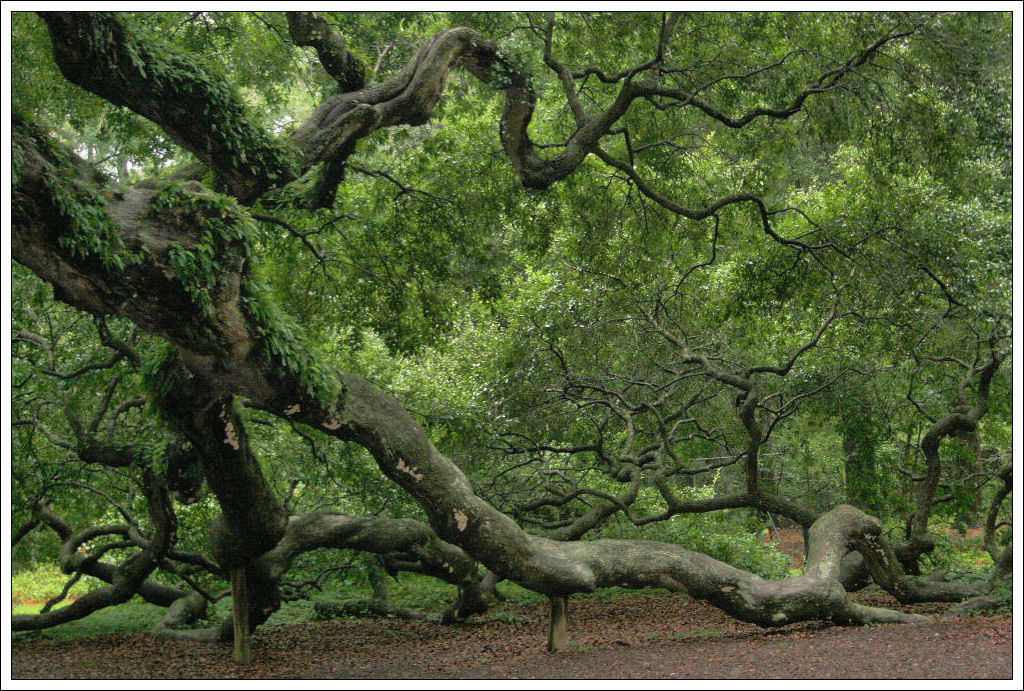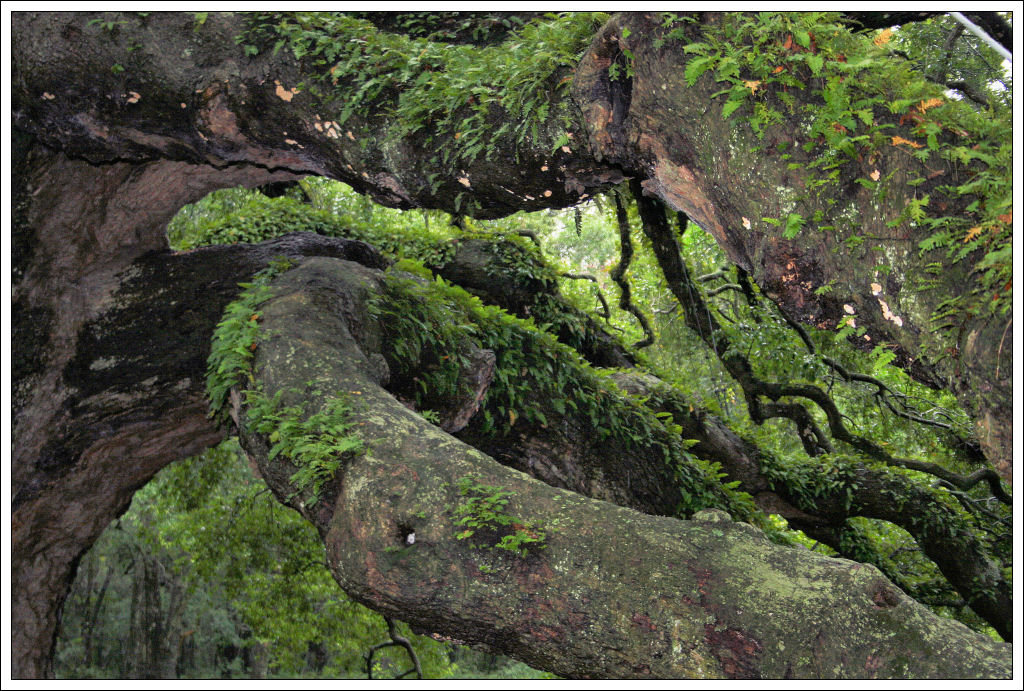Environmental issues
« Previous Entries Next Entries »Elements of Nature
Saturday, January 1st, 2022
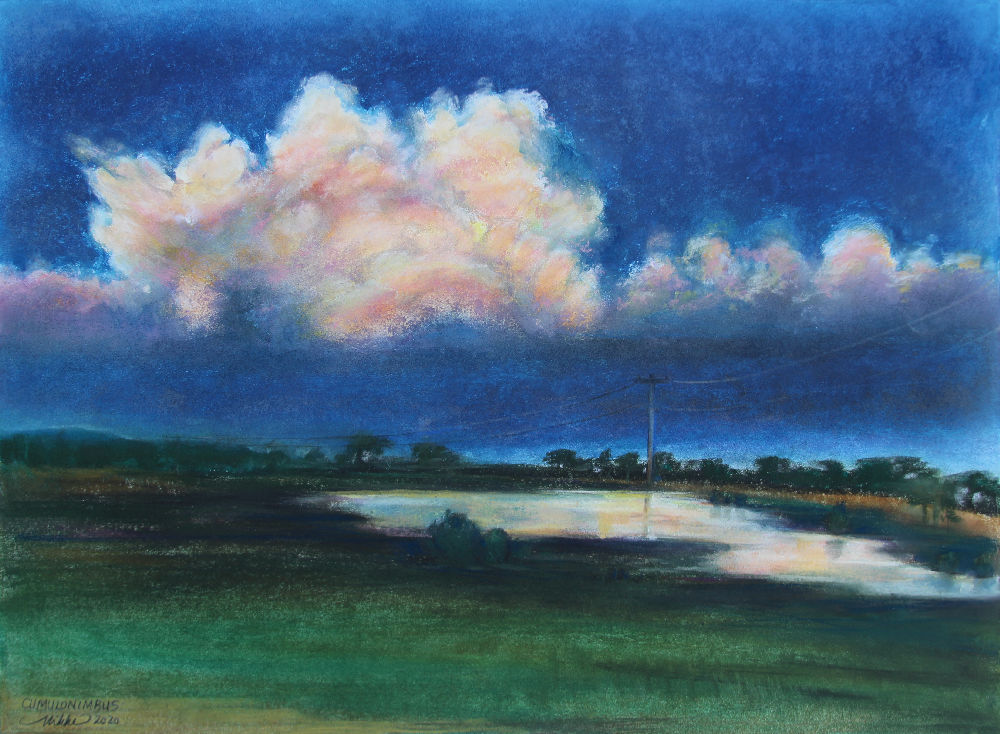 Paint Arson, 11H x 11W x 3D inches acrylics on canvas (2009), wrapped sides painted, frame unnecessary. Set on shelf or hang on wall. This and Cumulonimbus: Montana Sunset (2020) are in J. Mane Gallery’s ‘Elements of Nature’ online juried exhibition, showing through January 2022.
Paint Arson, 11H x 11W x 3D inches acrylics on canvas (2009), wrapped sides painted, frame unnecessary. Set on shelf or hang on wall. This and Cumulonimbus: Montana Sunset (2020) are in J. Mane Gallery’s ‘Elements of Nature’ online juried exhibition, showing through January 2022.
I don’t always have clear intentions behind my work, other than to make it interesting of course, because I wonder if too much explanation muddies a fresh impression of it. However, the writing connected to “Paint Arson” is worth the read. Fire is a destructive force, and positive associations with it are not immediate. For example, the pinecones of Sequoia, the largest trees on Earth, only open under the extreme conditions presented by fire. Read on…
English Ivy
Saturday, November 27th, 2021
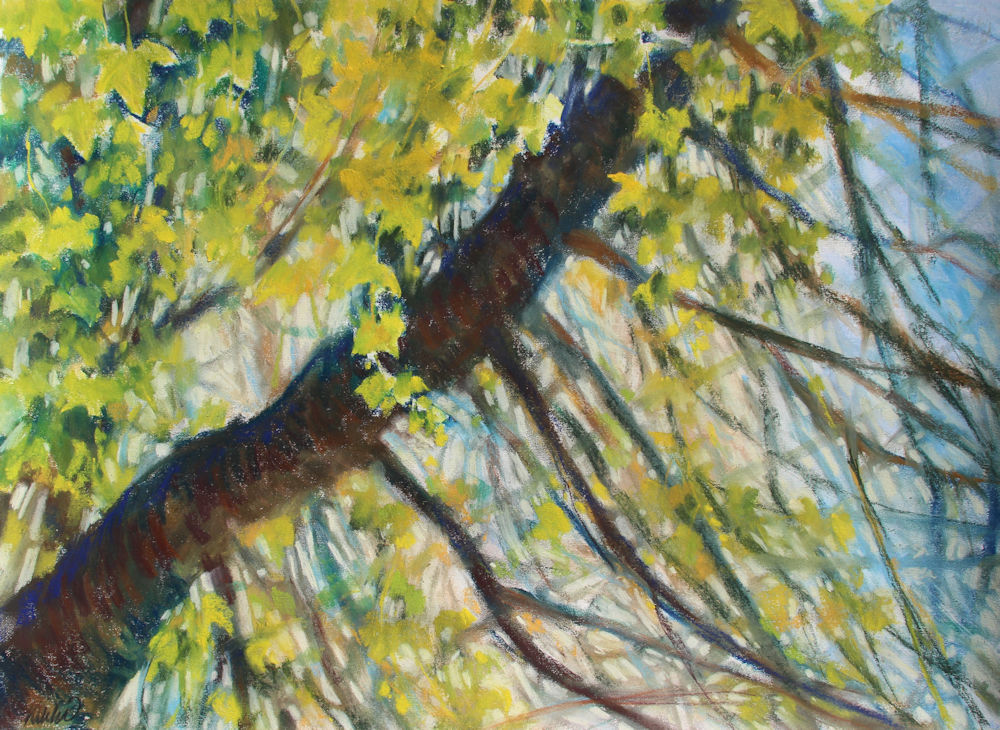
English Ivy drooped in oak tree branches, 18H x 24W inches soft pastels on paper. Framed size 27H x 33W”.
Pretty? Pretty invasive! Probably escaped from a nearby garden, English Ivy is beautiful draped in the branches of this Oak tree, but the plant, left unchecked as a ground cover, will choke out any growth of native or desirable flowers or plants. An aggressive perennial, it attaches easily with roots that exude an adhesive substance, destroying rooves and siding, climbing on branches that break under its weight. Once established, it will kill trees by blocking sunlight and thereby, photosynthesis. Because of the labor and enormous expense it takes to eradicate it from public lands and parks, people are encouraged to not plant this in your garden, even though it’s still for sale in nurseries.
York Gum trees
Saturday, May 15th, 2021
Eucalyptus loxopleba – York Gum Trees near Hyden, Western Australia – 18H x 24W inches soft pastels on paper. Apparently the York Gum is a marker of fertile soil in the Wheatbelt. Many have been cleared to make way for agriculture, resulting in weed trees and other invasive species taking over. In this iconic back-road-Australia scene, their charm welcomes us for miles.
Beautiful Invasion: Scotch Broom
Monday, March 15th, 2021
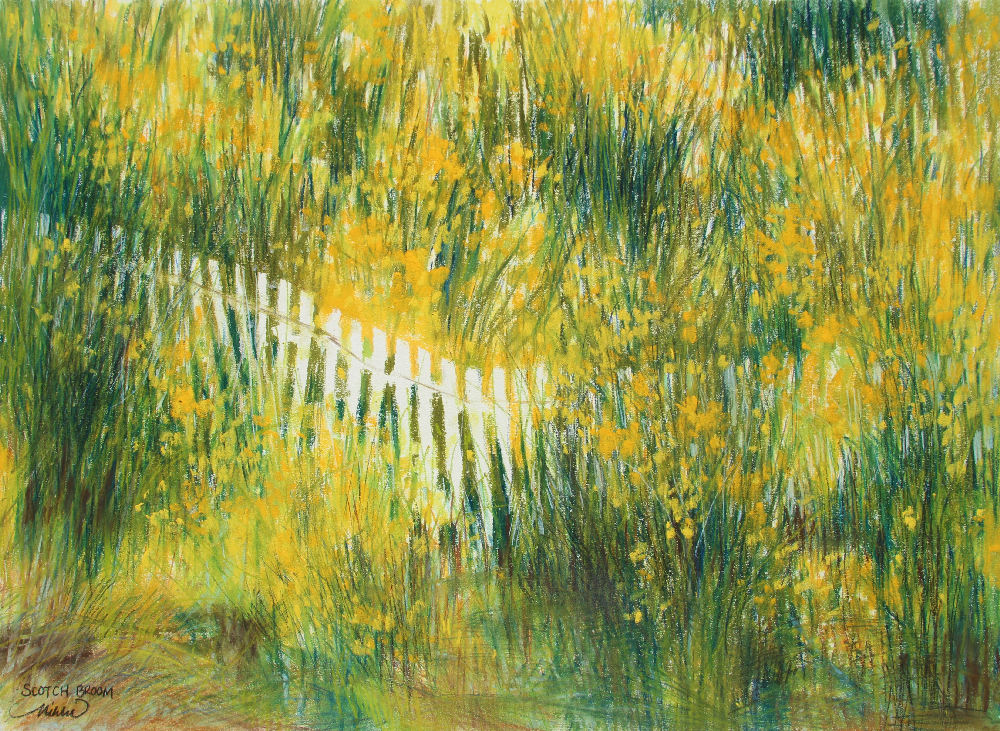
Beautiful Invasion: Scotch Broom hugging the cliffs beside Netarts Bay beach OR – 18H x 24W inches soft pastels on paper. During early May along the west coast, hillsides, forests, dunes and ditches are covered with the deep, vibrant, most gorgeous yellow flowers of Scotch Broom. Cytisus scoparius is an invasive species displacing native plants, shrubs and trees.
Framed size 27H x 33W inches, white mat and white wood frame, crackle finish.
Wildorado Wind Ranch
Monday, January 25th, 2021
Organic – Wildorado Wind Ranch, 25 miles from Amarillo, Texas – 18H x 24W inches soft pastels on paper. Framed size 27H x 33W” white mat and white wood frame with crackle finish.
Matthiessen State Park, IL
Saturday, November 21st, 2020
Matthiessen State Park, Illinois US – 18H x 24W inches soft pastels on paper. Framed size 27H x 33W inches, white wood frame, crackle finish.
This park located near Oglesby epitomizes the word “anomaly”. The surrounding landscape is flat for miles and miles, with a lot of farm fields and no hint at all that such pockets of vastly different ecosystems occur side by side, merging so abruptly. In fact, we know a guy who grew up an hour from there and he didn’t even know it existed! There are a few other hiking trails and hidden canyons with waterfalls in the area too.
The Angel Oak
Friday, October 9th, 2020
The Angel Oak on Johns Island, South Carolina – 18H x 24W inches soft pastels on 90 lb watercolor paper. The Live Oak with massive branches is estimated to be 400-500 years old. We visited during a tropical storm, so we were lucky to experience the magnificence of this tree all be ourselves.
Loosestrife
Friday, June 28th, 2019
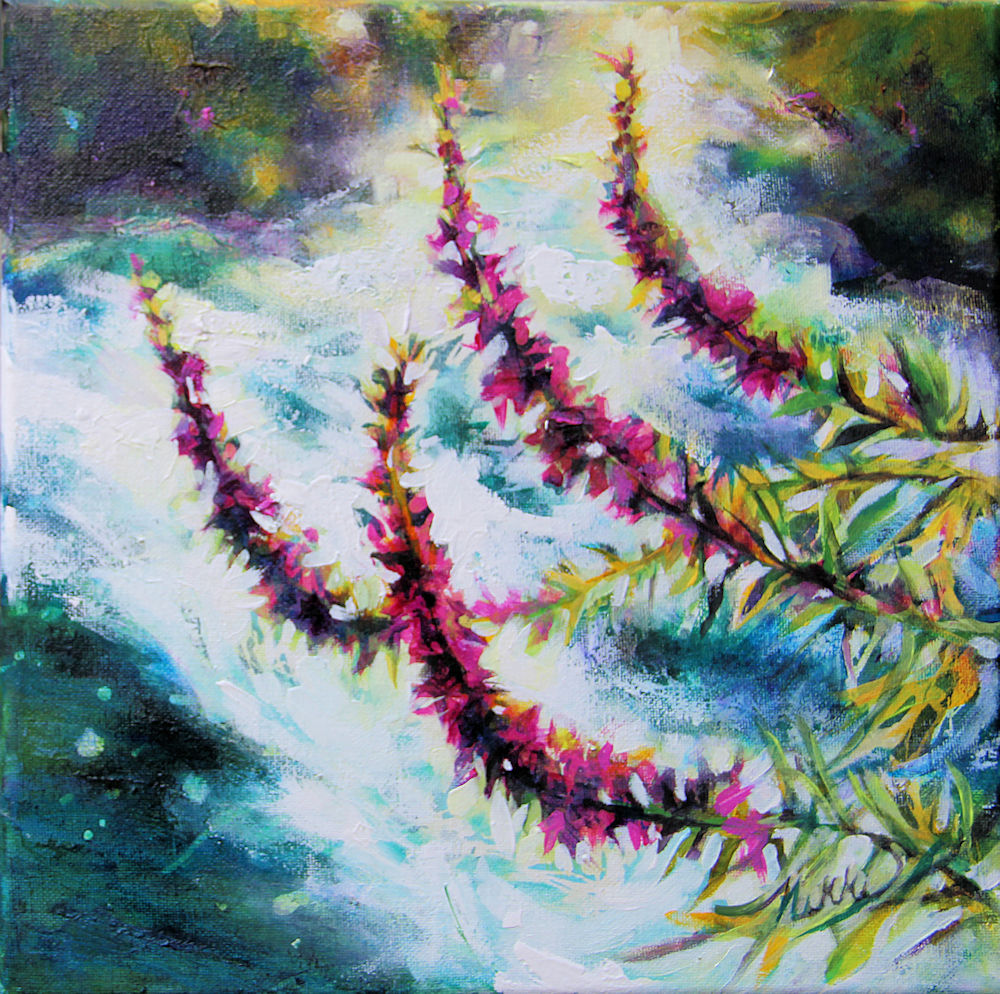
Loosestrife: beautiful invasion, Violet, ON Canada – 12 x 12 inches acrylics, crackle medium on canvas, frame unnecessary.
Store-bought canvases are really slippery, so I’ve started using crackle medium to give the paint something to hold onto. It also is great for subtle textures and building layers of color. For more texture, the medium can be manipulated while wet. It softens the paint layer/s below and can be scratched, lifted or molded into shapes with a brush.
Indian Paintbrush
Tuesday, May 8th, 2018
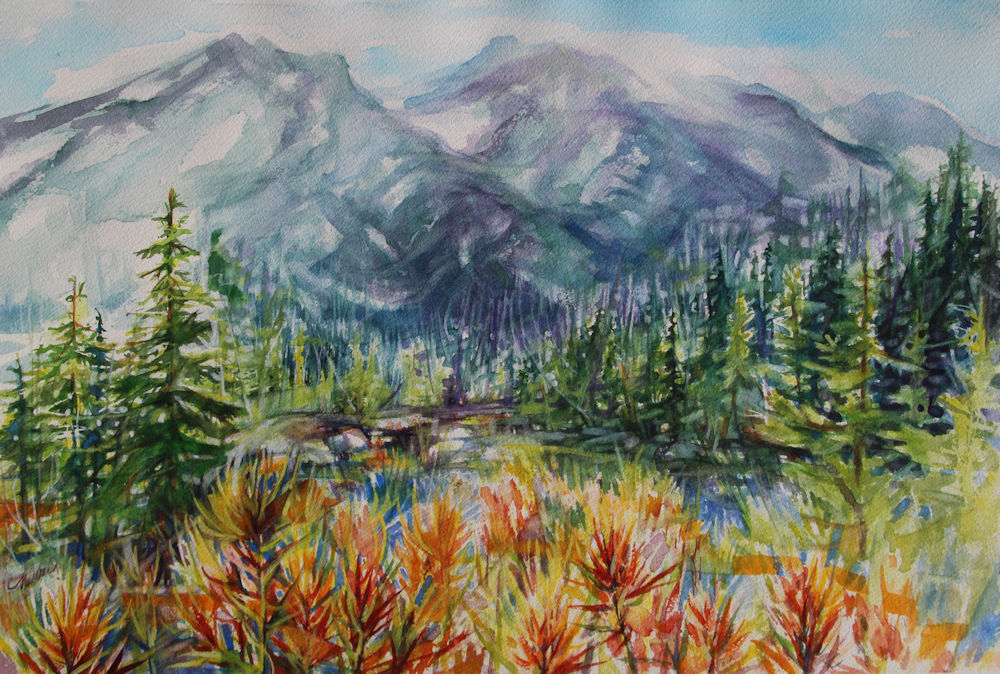
Indian Paintbrush, Mt. St. Helen’s Washington, 14H x 20W inches watercolors on 140 lb cold pressed. Framed size approx. 20H x 26W inches – white mat and white wood frame with crackle finish.
The Angel Oak, South Carolina
Saturday, April 14th, 2018
This article and set of photos, initially written in 2008 and updated in 2018, honors the tireless efforts to halt construction on John’s Island, South Carolina that would have encroached on an area of land boasting the Oak tree estimated to be 400 to 500 years old. Thanks to conservation and other local groups like schools and churches, individual donors, pro-bono work from lawyers, a sizable grant, and numerous petitions, we are reassured that persistence does make a difference on this planet. The land surrounding the Angel Oak is no longer in jeopardy. Read more about this amazing tree.
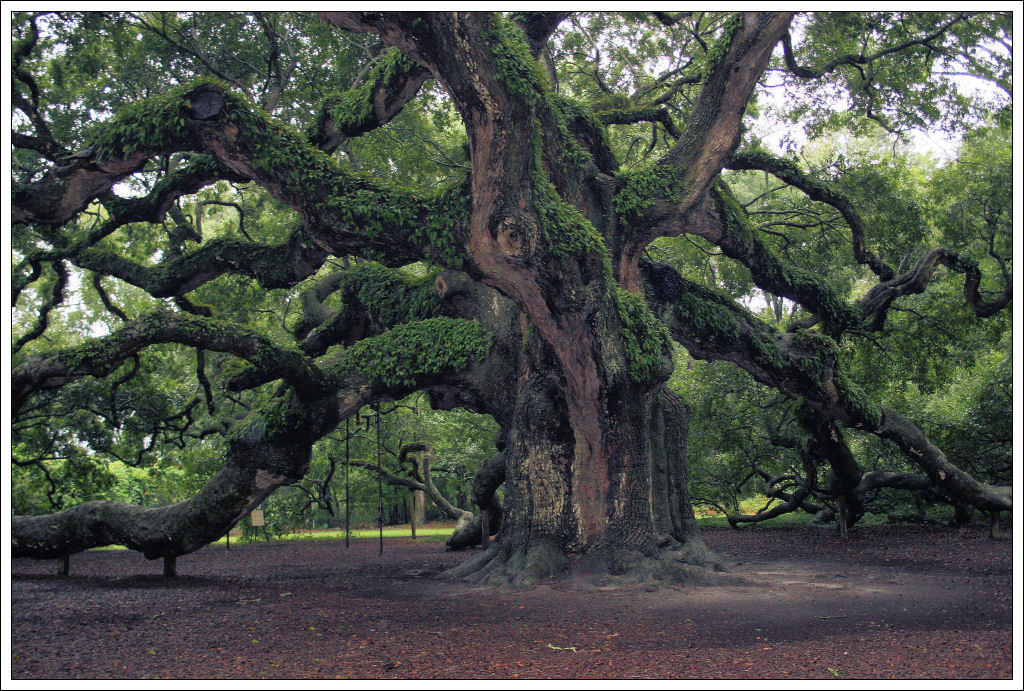 Charleston, SC is proud of its heritage and respected for its commitment to preserving history in the area, and after many years, residents were finally victorious over plans that would have cut down nearby trees and forest in favor of land development.
Charleston, SC is proud of its heritage and respected for its commitment to preserving history in the area, and after many years, residents were finally victorious over plans that would have cut down nearby trees and forest in favor of land development.
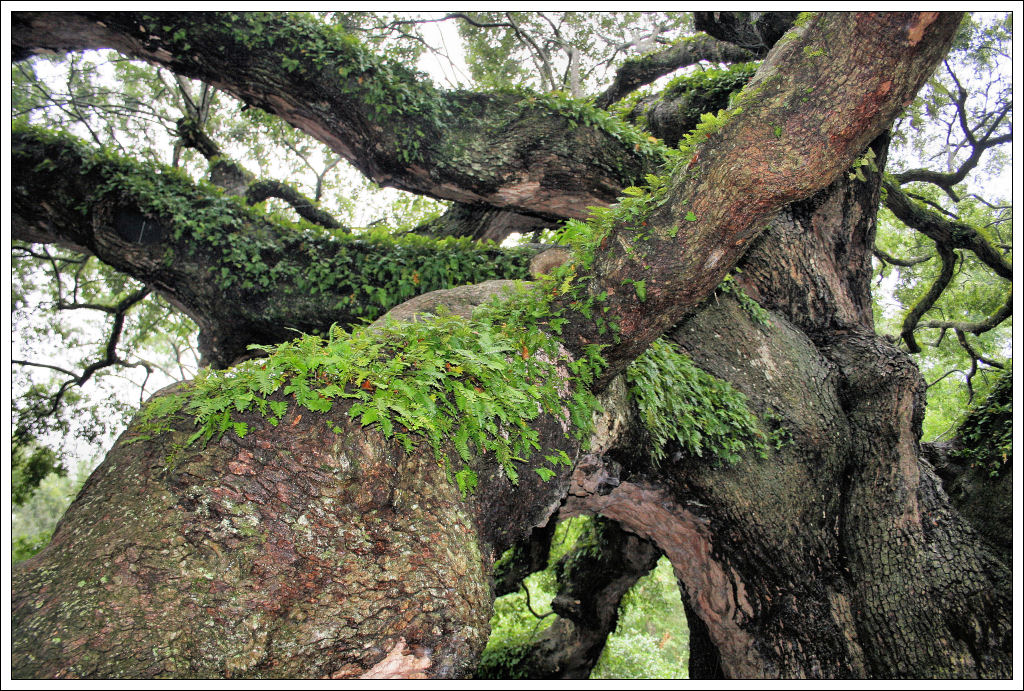 In one 2008 online petition there were hundreds of pages of interesting comments and pleas from residents who have fond memories of climbing the branches as children, plus exclamations written by tourists – national and international – who have visited the area specifically to see the Angel Oak. The tree is so significant to locals, a nearby elementary school carries its name. Picnics, weddings and reunions are held in the Angel Oak Park, including an annual summer Arts event, “Evening under Angel Oak” featuring live music, drama and other activities.
In one 2008 online petition there were hundreds of pages of interesting comments and pleas from residents who have fond memories of climbing the branches as children, plus exclamations written by tourists – national and international – who have visited the area specifically to see the Angel Oak. The tree is so significant to locals, a nearby elementary school carries its name. Picnics, weddings and reunions are held in the Angel Oak Park, including an annual summer Arts event, “Evening under Angel Oak” featuring live music, drama and other activities.
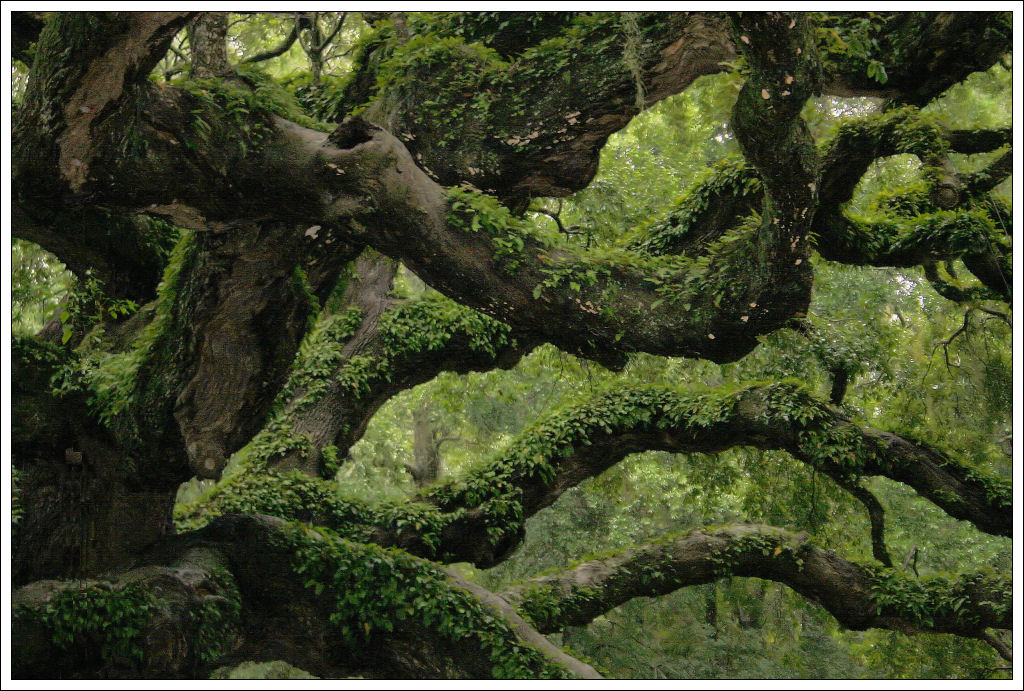 During August, 2008 my husband and I drove through South Carolina and took a short detour to John’s Island. We drove through wicked rains at the edge of Tropical storm Faye, so when we arrived at Angel Oak Park no one else was there. Although the light was not ideal, fortunately rain subsided long enough to take photos.
During August, 2008 my husband and I drove through South Carolina and took a short detour to John’s Island. We drove through wicked rains at the edge of Tropical storm Faye, so when we arrived at Angel Oak Park no one else was there. Although the light was not ideal, fortunately rain subsided long enough to take photos.
This is one impressive tree! The trunk and lower branches are so immense, they have been propped up with stakes and heavy cables here and there, which is a little intrusive when taking photos, but obviously necessary. Growth is spread outward more than upward. No wonder it is considered sacred by the locals… there is an appreciable presence felt while standing silently under its canopy, which apparently occupies 2,000 yards of space above.
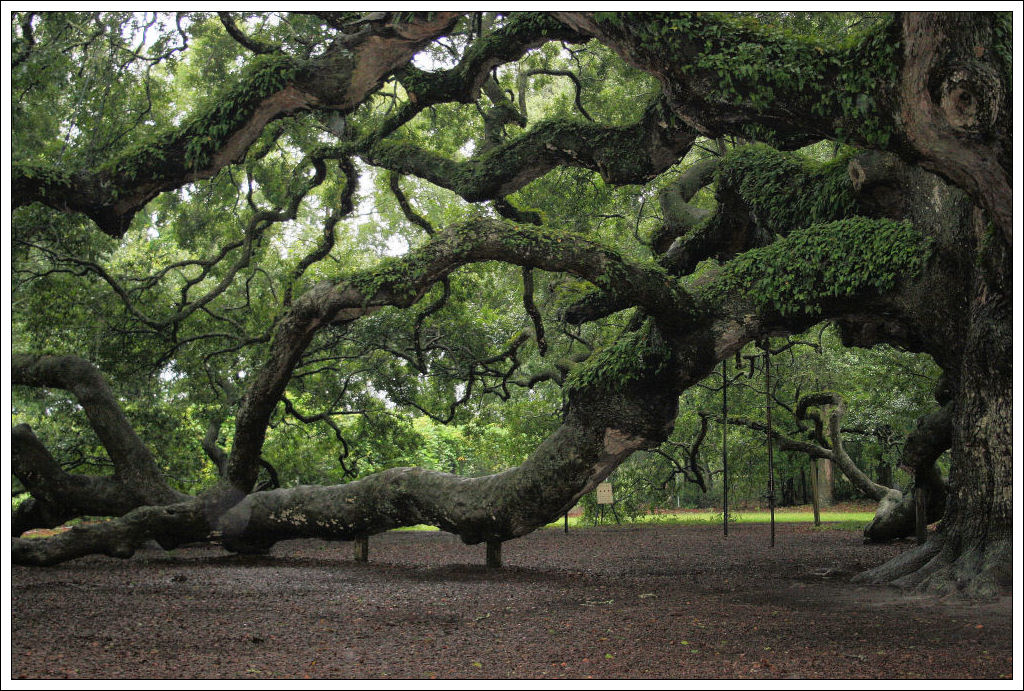 It occurred to me that this tree has lived through one serious chunk of history, and I wondered what was happening on our planet when it was knee-high to an acorn? The Angel Oak’s parent-tree and surrounding forest flourishes for eons before one special acorn falls from one of the magnificent Oaks on the southeastern shores of a land only known to the indigenous peoples then. The acorn sprouts along with many others, but this one will outlive the rest, seasoning hurricanes, climate changes, human encroachment and wars.
It occurred to me that this tree has lived through one serious chunk of history, and I wondered what was happening on our planet when it was knee-high to an acorn? The Angel Oak’s parent-tree and surrounding forest flourishes for eons before one special acorn falls from one of the magnificent Oaks on the southeastern shores of a land only known to the indigenous peoples then. The acorn sprouts along with many others, but this one will outlive the rest, seasoning hurricanes, climate changes, human encroachment and wars.
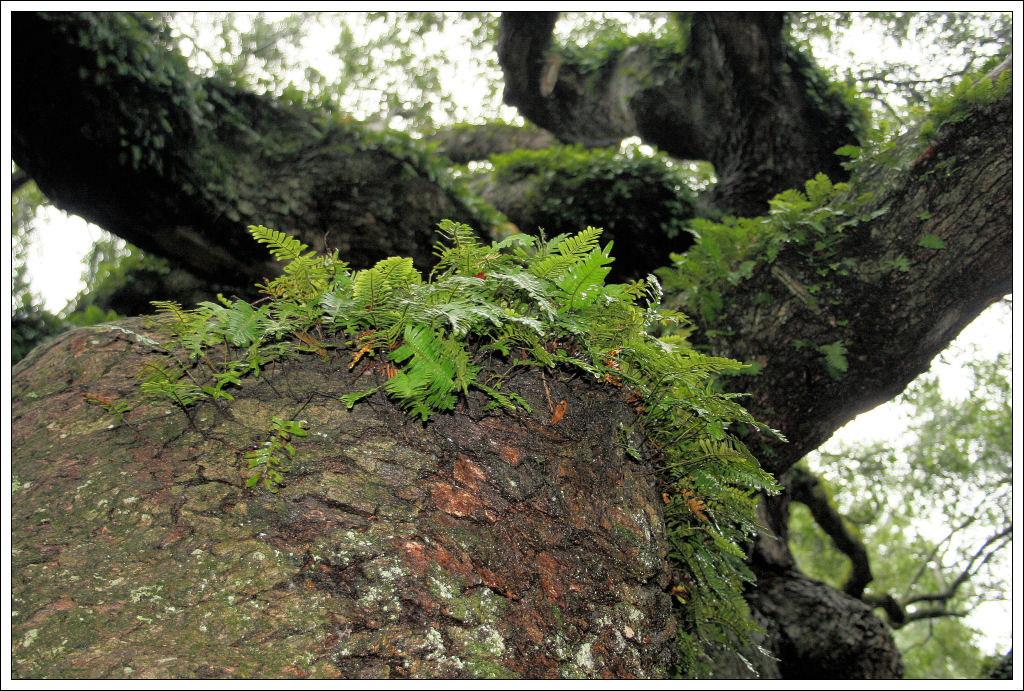 Much of what we are familiar with; our collective modern identity has been shaped by the events and people who lived and died since the Angel Oak established its first roots in the earth. If trees could talk…!
Much of what we are familiar with; our collective modern identity has been shaped by the events and people who lived and died since the Angel Oak established its first roots in the earth. If trees could talk…!
The Angel Oak does not exist on its own. It depends on the surrounding forest, so any deliberate disturbance in the immediate soil or neighboring properties would disrupt its far-reaching and delicate root system. Thankfully, now the tree will remain host to a myriad of life forms, supporting an abundant, specialized ecosystem of mosses, fungi and fern varieties, insects and amphibians – hopefully for five hundred more years. The Angel oak lives on as one of the true jewels on this planet.
While older, poorer quality photos are still gradually being replaced, the Majesty of Trees / Dancing with Trees exhibition website is now updated. Check it out!
« Previous Entries Next Entries »


